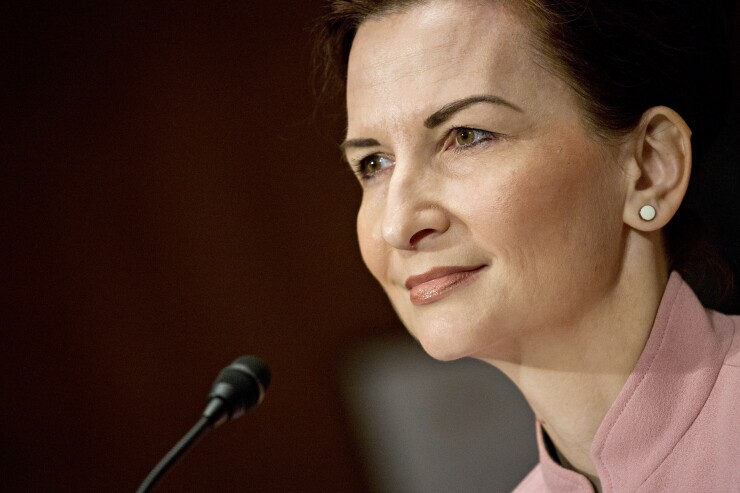WASHINGTON — Banks continued to benefit from the recent tax reform law as they delivered another earnings record in the second quarter, the Federal Deposit Insurance Corp. said Thursday.
The industry’s profit was $60.2 billion, a more than 7% increase from the previous record set in the first quarter and a 25% leap from a year earlier. The FDIC, releasing its Quarterly Banking Profile, attributed the earnings jump to higher net operating revenue and a lower effective tax rate resulting from last year’s law. Without the lower rate, the FDIC said, net income would have totaled $53.8 billion.
But it was a solid quarter in terms of revenue regardless of the smaller tax bill. The average return on assets rose 24 basis points from a year earlier to 1.37%. With a 16-basis-point rise in the average net interest margin, to 3.38%, net interest income grew 8.7% to $134 billion. Noninterest income rose 2% from a year earlier to $68 billion. The FDIC identified significant growth in servicing fees, fiduciary activity and net gains on sales of other assets.

“The increase in revenue was broad-based across the industry, as over 80% of all banks reported higher revenue from a year earlier,” FDIC Chairman Jelena McWilliams said in a statement prepared for the release of the report. It was McWilliams’ first report on the industry’s health since taking the helm of the agency in June.
Still, the FDIC warned of heightened risk factors largely associated with the interest rate environment and banks competing more aggressively for loans.
"So far, increases in interest rates have been largely beneficial to most banks as assets have repriced at a faster rate and in a greater amount than liabilities,” McWilliams said. “Repricing of deposits due to depositor demands for increased rates could result in earnings pressure for banks, particularly those that have a significant amount of long-term assets or those that are reliant on rate-sensitive deposits.”
Banks set aside $11.7 billion in loan-loss provisions, a 2.4% decrease from the previous year, with almost a third of banks reporting lower provisions. The industry’s noninterest expenses grew 4.6% from a year earlier to $113 billion, which included a 5.2% leap in salary and benefit costs. The agency said the industry’s net charge-off rate of 0.48% remains “stable.”
"While results this quarter were positive, an extended period of low interest rates and an increasingly competitive lending environment have led some institutions to reach for yield," McWilliams said. "This has led to heightened exposure to interest-rate risk, liquidity risk, and credit risk."
The FDIC said more than seven out of 10 community banks reported higher net income than a year earlier. Smaller institutions' profit was $6.5 billion, a 21% increase from the second quarter of 2017. The Deposit Insurance Fund grew by $2.5 billion to $97.6 billion, and the ratio of reserves to insured deposits rose 3 basis points to 1.33%.





